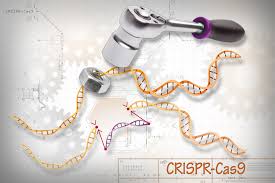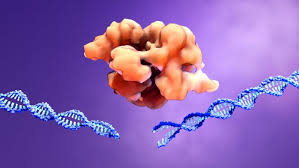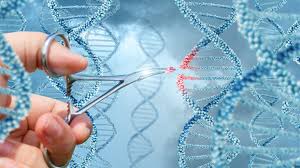
Gene Editing
Introduction
CRISPR-Cas9 is a groundbreaking gene-editing technology that has the potential to revolutionize modern medicine. By providing scientists with the ability to modify specific genes in a precise and controlled manner, CRISPR has opened up new frontiers in genetic research and therapy. This technology is not only changing how we understand diseases but also how we treat them. With the ability to potentially cure genetic disorders, modify immune cells for cancer therapy, and even offer solutions for previously untreatable conditions, CRISPR-Cas9 is considered one of the most transformative tools in medicine today.
How It Works
CRISPR-Cas9 is based on a natural mechanism found in bacteria, where it functions as a defense system against viruses. The system uses a protein called Cas9, which acts as molecular scissors to cut DNA at a specific location, and a guide RNA, which directs the Cas9 protein to the exact spot on the DNA where the cut should occur. Once the DNA is cut, the cell’s repair mechanisms either disable the gene or allow new genetic material to be inserted, making it possible to edit the genome at precise locations.

Potential Medical Applications
- Gene Therapy for Genetic Disorders:
CRISPR-Cas9 has the potential to directly edit faulty genes that cause genetic disorders such as sickle cell anemia, cystic fibrosis, and hemophilia, offering the possibility of curative therapies. - Cancer Treatment:
The technology can be used to modify immune cells, such as T-cells, to better target and attack cancer cells, improving immunotherapy outcomes and potentially leading to more effective cancer treatments. - Prevention of Inherited Diseases:
CRISPR could be used to edit embryos or germline cells, preventing the inheritance of genetic diseases and offering a new way to protect future generations from conditions like Huntington’s disease or Down syndrome. - HIV Treatment:
In HIV patients, CRISPR could be used to remove the virus from the infected cells, providing a potential cure and reducing the need for lifelong antiretroviral therapy. - Personalized Medicine:
By tailoring gene edits to an individual’s unique genetic makeup, CRISPR could lead to personalized therapies that directly address the root causes of diseases, offering a more effective and targeted approach to treatment.
Why It’s Underrated
Although CRISPR-Cas9 has the potential to reshape medicine, its progress has been somewhat understated in mainstream discussions, especially when compared to other innovations like artificial intelligence or blockchain. Several factors contribute to this underappreciation:
- Ethical Concerns: Editing human genes, especially in embryos, raises complex ethical questions about the consequences and potential misuse of the technology.
- Regulatory Challenges: There are still many regulatory hurdles to overcome before CRISPR therapies can become widely available, especially in areas like germline editing.
- Public Awareness: Despite its immense promise, CRISPR’s long-term impact might be underestimated by the public, as it remains a highly technical and niche topic.
Challenges Ahead

- Precision and Safety: One of the most significant challenges in using CRISPR for medicine is ensuring that gene edits are precise and that off-target mutations do not cause harmful consequences.
- Affordability and Access: As with many advanced medical technologies, there is a risk that CRISPR-based therapies could be expensive and inaccessible to lower-income populations, raising concerns about equity in healthcare.
- Ethical Considerations: The potential for CRISPR to alter human embryos or germline cells has sparked heated debates about the ethics of genetic modifications and the possible unintended consequences of these interventions.
Conclusion
CRISPR-Cas9 represents one of the most promising innovations in the field of medicine, offering the potential to cure genetic diseases, revolutionize cancer therapies, and personalize treatments for millions of individuals. While its applications hold immense promise, there are still significant challenges to address, including ethical concerns, precision, and accessibility. As research progresses and regulatory frameworks evolve, CRISPR could become a cornerstone of modern medicine, fundamentally altering the way we approach genetic disorders and healthcare at large. Its future in medicine is bright, and with careful oversight, it could usher in a new era of personalized, gene-based therapies that were once considered science fiction.

